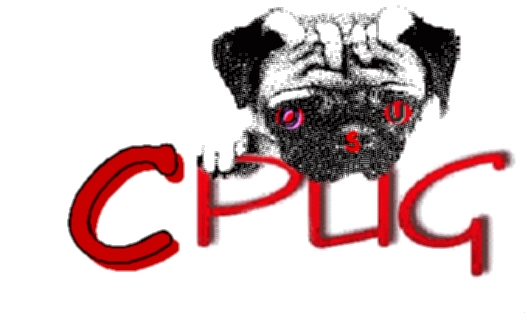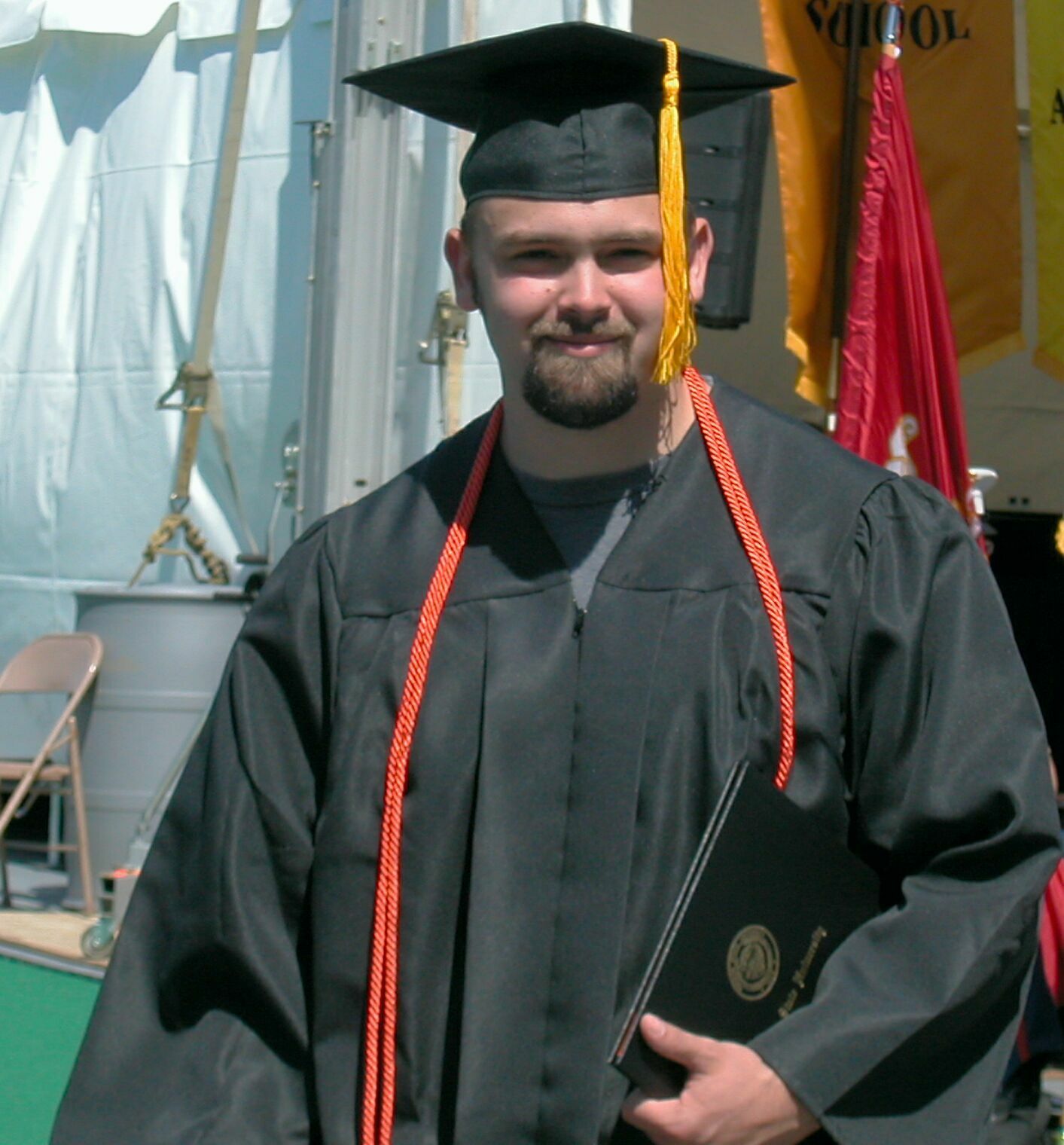A Research-Rich Bachelors Degree Program at Oregon State University |
 |
 |
| 1st CP Grad, Jon LaFollette, 2003 | ||
| |
|
| |
|
| |
|
| |
|
| |
|
|
| |
|
|
| |
|
|
Computational Physics combines physics, computer science and applied mathematics in order to provide scientific solutions to realistic and often complex problems. Areas of application include environmental modeling, nuclear cleanup, the design of materials, ground water transport, the nature of elementary particles, medical imaging, and energy management. A computational physicist understands not only the workings of computers and the relevant science and mathematics, but also how computer algorithms and simulations connect the two.
The recent and rapid developments in science and engineering have been driven by a dramatic increase in the power and use of computers. Yet too many science and engineering graduates do not have strong enough backgrounds in computation to take advantage of these recent developments, while many computer science graduates do not have the background in mathematics and science needed for technical fields. Our graduates will present to the job market and graduate schools, people who possess a competent education in physics, mathematics and computing, as well as valuable skills in complex problem-solving and team work. They will be able to enjoy careers involving high-performance computing and science, without having to choose between them.
With a Bachleor's degree in Computational Physics, you could be bound for a career in:
A degree in Computational Physics is an excellent springboard to careers in many related fields where computation plays key roles; oceanography, material science, computer science, applied mathematics, geophysics, medicine, or finance.
The OSU Physics Department has already developed an award-winning two-quarter course in Computational Physics, a text book that serves as an international model for an undergraduate CP course, web-based tutorials and demonstrations that enhance the course and the text, and a course in Introductory Scientific Computing. With the addition of an Advanced Computational Laboratory, the modification of one other, and the use of courses offered in other departments, we have assembled a coherent and rigorous B.S./B.A. degree program in CP. Students in this program will be participants in a nationally-recognized leadership effort to establish an entire CP curriculum.
As described in the next section, the Oregon State Computational Physics program will present to undergraduate students materials that have recently been developed in research laboratories and supercomputer centers. This is a mark of excellence in the rankings of universities, and is facilitated by OSU being ranked as a Carnegie Doctoral, Research Extensive University.
When students complete our program, not only will they understand how to perform scientific computations, but they also will have experienced the interweaving of high-performance computing and communications into the fabric of modern science and engineering. Our aim is to have the mathematical equations and connections among physical idea become alive before every student's eyes, and for every student to understand physical systems at a level usually attained only in a research environment.
While the OSU program has professors lecturing on the curriculum materials and working directly with students in computer laboratories, the curriculum is also rich with web materials. This reflects our recent developments in web-enhanced education, and our view that one cannot beat having a motivated student sit at a computer in a trial-and-error mode in order to learn scientific computing.
As can be seen in the sample syllabus below, many of the Physics courses in our department are two-credit courses. These are part of the innovative Paradigms project that has reorganized the mid-level undergraduate courses into block covering materials normally found in a number of classes, but with related ideas.
Two key components of our program are:
In this way students experience the excitement of curiosity-driven research, get familiar with a large number of techniques, acquire confidence in applying the scientific method to complex systems, and continually build upon their accomplishments.
The final year of our program culminates in students doing a number of experiments, as well as a thesis project, in our new Advanced Computational Physics Laboratory. The "experiments" are simulations to b 20-node Beowulf supercomputer, and derive from completed M.S. and Ph.D. thesis research, as well as from National Partnership for Computational Infrastructure (NPACI) and national laboratories' thrust areas. Because the research laboratory for computational physics is a virtual world created by the computer, it is easier and quicker to work in this advanced research lab than in a "wet" one.
Another valuable part of program will be the involvement of students in summer projects with computational research programs within the university and at laboratory and industrial sites. Some of these programs will be part of the NSF's Research Experience for Undergraduates and some will be collaborations supported by NPACI at the San Diego Supercomputer Center, a sponsoring partner of our program.
Below is a sample schedule for the B.S. in CP degree. There are 180 total credits, in contrast to 192 required for a Computer Science degree. The computation-related courses shown in bold.
| Fall | Winter | Spring | ||||||||||||||||||||||||||||||||||||
Fresh (45) |
|
|
|
|||||||||||||||||||||||||||||||||||
| Soph (46) |
|
|
|
|||||||||||||||||||||||||||||||||||
| Jr (45) |
|
|
|
|||||||||||||||||||||||||||||||||||
| Sr (44) |
|
|
|
Other arrangements also exist, as well as ones in which substitutions are made depending upon the student's interests and the advisor's consent. Courses suggested for electives or approved substitution include PH 415, Computer Interfacing; PH 435, Classical Mechanics; MTH 452, Numerical Solution of Ordinary Diffrntl Equations; MTH 453, Numerical Solution of Partial Diffrntl Equations; CS 311, Operating Systems; CS 361, Fundamentals of Software Engineering; PH 428, Rigid Bodies; Ph 441, Physical Optics; PH 481, Thermal and Statistical Phys; PH 621, Classical Dynamics.
With this program, students will:
(for More Information)
Several National Science Foundations grants have led to the establishment of two Computational Physics Teaching Laboratories within the Physics Department. There are over 20 Sun workstations (each containing a second Windows-2000 CPU), 6 IBM Unix workstations, and 2 DEC Unix workstations. In addition, and particularly in support of our Advanced Computational Lab, the Physics Department has constructed a Beowulf supercomputing cluster from 20 Sun Ultras.
These 24-hour facilities are open to everyone in the program, and are separate from computers used by the research groups. There are also departmental computers in the Computer Interfacing Lab, in the General Physics labs, and in the Astronomy la, as well as numerous computers available on campus.
The Physics Department has a research group, the Science Accessibility Project, that develops ways to make scientific materials accessible to print-disabled (blind and dyslexic) students. Our program is incorporating SAP developments as well as producing accessible and interactive course materials in MathML and XML. We have had success working with students possessing a variety of disabilities, and welcome all to our program.
We are particularly interested in having women participate and succeed in our program. Although as a group women have low representation in Computer Science, surveys have found that they are more attracted to and successful in an interdisciplinary program that integrates computation with mathematics and problem solving. We often have women in our computational classes, with several having gone on to graduate work in computational science.
We have ongoing collaborations with Professor Manuel Paez of the University of Antioquia, Medellin, Colombia and the National Society of Hispanic Physicists to provide Spanish language versions of much of our new materials. Although the thrust of that effort is towards Spanish-speaking countries, we hope that this provides a welcoming environment that encourages more Hispanics to enter computational careers. We already have placed Spanish language tutorials on the web and are in the process of translating our entire Computational Physics text into modern technical Spanish.
Professor Rubin H Landau, CPUG Program Director
Physics Dept, Oregon State University, Corvallis, OR 97331
email: rubinATscience.oregonstate.edu, URL: http://www.physics.oregonstate.edu/~rubin
Return to Home Page of OSU Physics